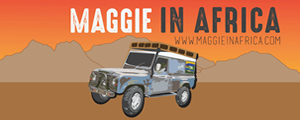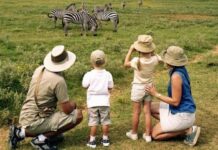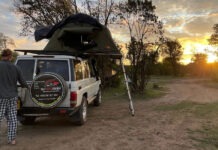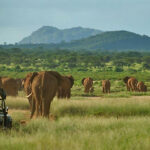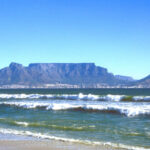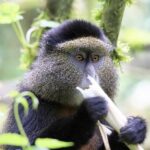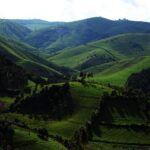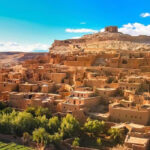Packing for gorilla trekking is one of the trickiest parts of planning an expedition into Uganda, Rwanda and DR Congo. It is worth mentioning that national parks where mountain gorillas are found are generally mountainous that literally require hiking through high elevations of 2500 to 4000 meters above sea level with moderate fitness levels required. The vegetation is also denser in these places and having a packing list provides you the required tools, equipment, assurance and inspiration to achieve your dream.
Whatever destination you choose (Uganda, Rwanda or the Democratic Republic of Congo), you will be walking deep in the jungles, not forgetting the constant challenges of humidity, hot sunshine and annoying insects in the forest. Mountain gorillas live in four magnificent national parks; the incredible Volcanoes National Park of Rwanda, iconic Bwindi Impenetrable Forest and Mgahinga Gorilla National Park of Uganda and the exceptional Virunga National Park of the Democratic Republic of Congo. The chance to enter their natural habitats to search for them is one of the life-changing wildlife experiences and anyone who has ever visited them will agree that seeing them is thrilling and these tours take place all year round.
The gorilla natural habits are apparently a never-ending tangle of verdant vegetation with no indicated signs, established hiking trails or even Google Maps for directions and to search for these Giant Apes in their natural habitats travellers are expected to get up very early and in the company of armed Rangers and experienced guides follow the footsteps and directions of trackers. Trackers normally move ahead of time to find gorilla nests and give directions to your group guides and this reduces the duration of gorilla treks (to take half an hour to about 5 hours), yet would have taken longer if done without the help of trackers.
Your group guide uses machete to create paths through the dense jungles and later detect gorilla nests where they spent overnight. Not only that, these creatures don’t move far from where they were last spotted the previous day with evidences of foot and handprint, broken or bent vegetation, remains of plant parts eaten by the Giant Apes. All these small and seemingly insignificant evidences are sign of previous mountain gorilla activity.
Ascending mountain slopes and descending to dry valleys in trying to find mountain gorillas is a riveting experience and draws travelers to one of the most adorable creatures on Earth and to have the best experiences, there is a recommended packing list that includes;
Valid Gorilla Trekking Permit
The four national parks where mountain gorillas live are protected natural environments and because of these, Park Authorities made it mandatory to have valid gorilla trekking permits as a way of checking tourists visiting each gorilla group.
This is seen as a way of maintaining the fragile natural environment and preventing the overexposure of Giant Apes to visitors as well as ensuring the on-going funding of mountain gorilla conservation. There is no place that will allow you to track gorillas without a valid gorilla permit and therefore this is one of the things to pack for gorilla trekking.
Travel Documents
After ensuring that you have your gorilla permit, also check and ascertain that your travel documents are up-to-date and therefore pack your passport, plane ticket, visa (if required) and travel itinerary among others.
Covid-19 protection
Given the prevailing Covid-19 pandemic at the time of writing, negative test results for the last 72 hours, face masks and hand sanitizer are some of the items to pack for indelible gorilla trekking tours within Uganda, Rwanda and the Democratic Republic of Congo.
Lightweight and waterproof rain jacket
Whether dry or rain season, a rain jacket is recommended because downpours in the jungles are spur-of-the-moment as well as unforgiving. Nothing is more uncomfortable than walking through the forest in wet pants and underwear. With such occurrences, your entire gorilla experience is likely to be ruined.
Safari pants and long-sleeved shirts
Long safari pants and long sleeved shirts play an important role of protection against the unpleasant scratching vegetation and well as unforgiving insects in the jungles. Similarly, pack some long cotton socks for tucking pants and avoiding insects especially red ants from biting and causing commotion.
Gardening Gloves
Much as Ranger guides try their best to clear and create paths through the jungles during gorilla trekking, you will still need to get hands dirty by holding into something (tree branches and grass) and therefore to avoid prickles or disastrous creatures on your delicate hands, gardening gloves are definitely handy for gorilla trekking.
Sturdy and well-fitting hiking boots
Before anything else, avoid packing new hiking boots but rather opt for the ones you have warm several times because new ones are likely to bring blisters on your feet, given the long treks through the jungles. Remember that the forest is a real dump with no established trails and to maneuver through, the footwear has to be on point and try as much as possible to avoid open shoes/ or sandals.
Insect repellant
Even after dressing appropriately for the gorilla trek, it doesn’t mean that insects (especially mosquitoes and bugs) will take away from you and therefore for protection in the jungles, wearing an insect repellant would do but make sure that it is environmentally friendly.
Healthy energizing snacks
Mountain gorilla trekking is not a simple walk through a Park but rather hard work, requiring a lot of energy and hydration because the duration of gorilla treks sometimes isn’t predictable. Travellers are therefore advised to have some energy giving snacks especially dried fruits, chocolate, biscuits and many others. You will be given some breaks to enjoy your snacks and drink water during treks.
Toiletries
Toiletries are also important for gorilla trekking and the most crucial ones are biodegradable toilet paper, toothbrush, sunscreen, toothpaste, hair gel, deodorant, wet wipes, face towels and so much more.
Lightweight and rainproof backpack
You will be carrying some items (especially cameras, drinking water, snacks, your train jacket, binoculars and others) during gorilla trekking and therefore a backpack is handy and because of the unpredictable weather, a waterproof one is recommended.
Camera
How will you share memories of your gorilla safari without photos and non-flash camera is recommended. Other important things to pack are binoculars, sunglasses, safari hats, warm sweater for cold mornings and evenings, to mention but a few.
